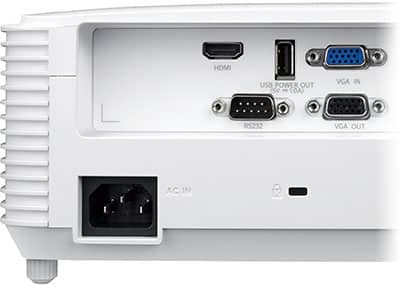Projector
Laser Range requires a projector (included in the Laser Range Complete system) to create the full-size targets and environments it depicts. Ideally, the projected image should be about 6 feet wide. This will ensure that targets in the virtual world closely match their real-world equivalents.
Laser Range works with a variety of projectors but there are some important things to keep in mind when selecting a projector for use with your Laser Range system.

Resolution and Throw
Laser Range uses a resolution of 1,024 x 768 pixels – also known as XGA resolution. If you are going to provide your own projector, make sure that it supports 1,024 x 768 resolution.
The throw ratio determines how far back the projector must be to project a certain size image. For example, a projector with a 2:1 throw ratio must be 12 feet back to project a 6-foot wide image (6 x 2 = 12).
The default Laser Range camera matches a projector with a throw ratio between 1.5 – 2:1. If your projector has a throw ratio under 1.5:1 (also known as a short throw projector), you can choose a wide angle Laser Range camera at no additional charge.
Computer Connection
Most projectors support HDMI and/or VGA input. Either of these is fine for use with Laser Range. Some projectors also support USB input; however, since this bypasses your computer’s graphic card, USB video is not compatible with Laser Range.


Projector Brightness
Projector brightness is measured in lumens. Higher lumens produce brighter images. We recommend projectors with 2,500 – 3,000 lumens. Projectors with lumens under 2,500 may work provided that your training room is dark.
Other Considerations
Generally speaking, LED projectors do not perform well with firearm simulators. You should also avoid small pico projectors and unusually inexpensive projectors (under $200) as they often have inferior lens elements and very dim output. In our experience, these projectors are not bright enough to properly calibrate the system and they tend to project dull, fuzzy images.
